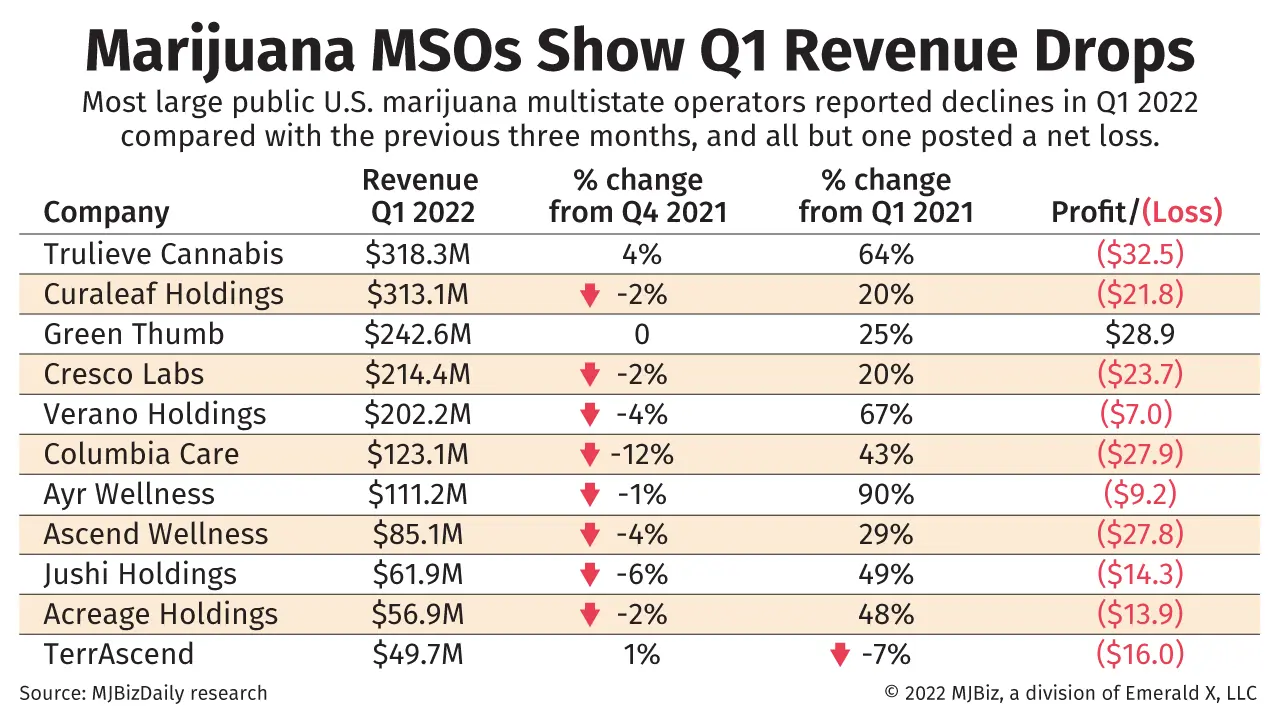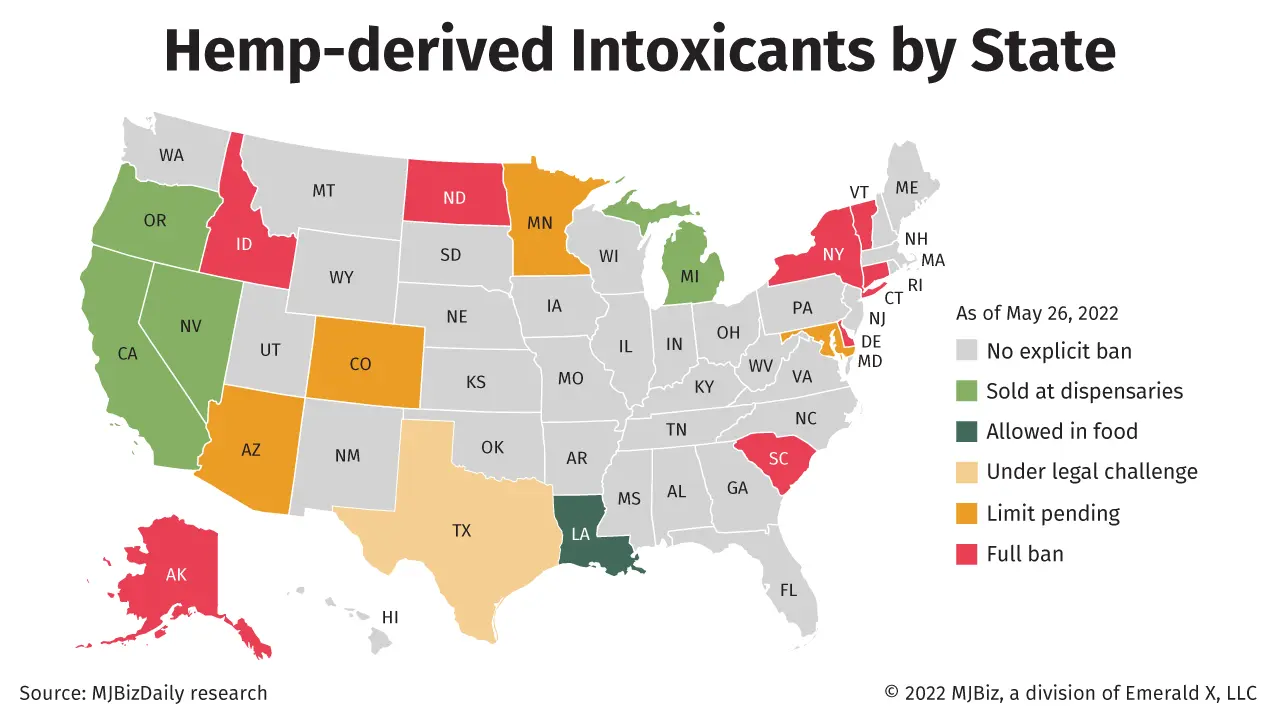Companies that cultivate cannabis in multiple states must use different strategies depending on a market’s maturity, the climate and what consumers will pay for the products.
By way of comparison, the California market is among the most mature in the United States, with a highly competitive flower scene where growers can sell only top-quality cannabis.
The California climate – with long stretches of daylight and minimal rainfall – allows growers to produce very large plants and therefore focus on selling “A buds,” the best part of the plant.
In Massachusetts, by contrast, recreational marijuana sales are relatively new – having started in November 2018 – and most cannabis is grown indoors because of the state’s rainy, humid climate.
Profitable indoor cultivation techniques include using hydroponics, crop steering and inert growing mediums, such as rockwool, for cleanliness and ease of use, said Matthew Stevens, cultivation director for 4Front Ventures, a vertically integrated multistate operator with offices in Massachusetts and Arizona.
“Companies and their cultivators must align with the direction of the market they are in to maximize profits while maintaining the integrity of the plants they are growing,” he added.
So, how do the approaches differ for a company looking to operate in both states?
Quality or quantity
Successful grows will focus on good genetics, nutrients, great plant-care techniques and crop steering, when appropriate, said David Catanzano, head of cannabis operations for Tilt Holdings, a multistate operator headquartered in Phoenix.
Crop steering involves precisely monitoring how plants are performing and adjusting controls accordingly.
According to Catanzano, the key to successful production of high-grade flower is to know how to truly read the plant, regulate your environment and control the specific inputs to steer crop growth.
In a market with more discerning customers, Catanzano would lean more on hand-trimming techniques to ensure a more boutique or craft-style finished flower.
“Of course, we would not waste the rest of the plant,” he said. “We would move this product on to other parts of our production, such as creating distillate for concentrates as well as supplying our edible program to maximize our returns.”
Ryan Douglas, a Florida-based cannabis cultivation consultant, would take a similar approach. He recommends harvesting in two phases.
“The first harvest would be the cream of the crop, just the mature top flowers that typically have the most cannabinoids,” he said.
The learning curve for entering the cannabis industry is steep. Start with the fundamentals.
MJBiz Cannabis 101 Email Course
A 10-part email course designed to educate new hires and aspiring professionals on the key fundamental areas of the legal cannabis industry, including:
- History of legal cannabis in America
- Overview of plant-touching + ancillary business sectors
- Cannabis finance and investing
- Cannabis marketing and brand building
- Employment + hiring opportunities
- And much more!
Gain a comprehensive understanding of this complex industry with this free resource.
This product should be hung to dry, hand-trimmed and cured.
The second harvest would remove everything else and be sold or processed for fresh-frozen extract, Douglas added.
If the market is looking for any and all flower because of high demand, he would recommend growers avoid any huge changes to the cultivation program that might disrupt the flow of production.
“The goal in these situations is to obtain desirable genetics, grow them well and repeat,” Douglas said.
“Hot markets don’t always stay hot, so the objective should be to seize the moment with quality flower and avoid unnecessarily overcomplicating production.”
Market comparison
“The question across markets really becomes, ‘How do you industrialize, scale and produce consistent high-quality product?'” said Andreas Neumann, chief creative director of Jushi Holdings, a multistate cannabis company based in Boca Raton, Florida.
“The bar has been raised, and nowadays, consumer demand is really much more constant – this is a definite challenge for everyone,”
For one, consumer appetites in California are broader, according to Neumann.
Outdoor-grown cannabis was long thought of as the ultimate product in that state, he said.
However, consistent indoor- and greenhouse-grown flower puts “California ahead of the game.”
“The state is entering the industrialization era of cannabis, and while the indoor-grown flower is necessary and still considered great due to its “’perfection,’ there is also a big future for greenhouse and outdoor grows there,” Neumann added.
In Massachusetts, by contrast, the market is predominately indoor-grown flower.
“Perfectly curated indoor flower is often considered ‘prime pot,’ grown under the perfect conditions,” Neumann said.
“Consumer appetites default to expecting perfection.”
In newer markets such as Massachusetts, cultivators tend to sell everything they grow because there are few providers and retailers need product, Douglas said.
“Competition is much more fierce in mature markets, and cultivators are forced to differentiate themselves through quality and unique product offerings,” he added.
California is a very saturated market with products and brands established in all categories and many large cannabis companies, Stevens said.
“Which means the consumer can find flower of all realms of quality, from inexpensive and basic to high-quality craft cannabis,” he added.
But the quality of the cannabis in Massachusetts is catching up, Stevens said, as the market there matures.
“Many companies are expanding their focus on cultivating strains with diverse terpene and cannabinoid profiles,” he added.
New versus mature
In new markets, Douglas recommends companies cultivate using tried-and-true hydroponic growing methods. That keeps the process simple, he added.
“A cultivation startup with the right genetics and a skilled grower can rapidly put together a good grow site and turn out quality flower,” Douglas said.
In established markets such as California, growers should consider differentiating themselves with small batches of organically grown, craft-quality cultivars “that you can’t find in every dispensary,” he added.
In a newer market with less competition, the focus is often on expanding canopy and producing as much product as possible, Stevens said.
In a mature market, companies will often either have massive footprints or create niches for themselves with unique products, he added.
Bart Schaneman can be reached at bart.schaneman@mjbizdaily.com.





